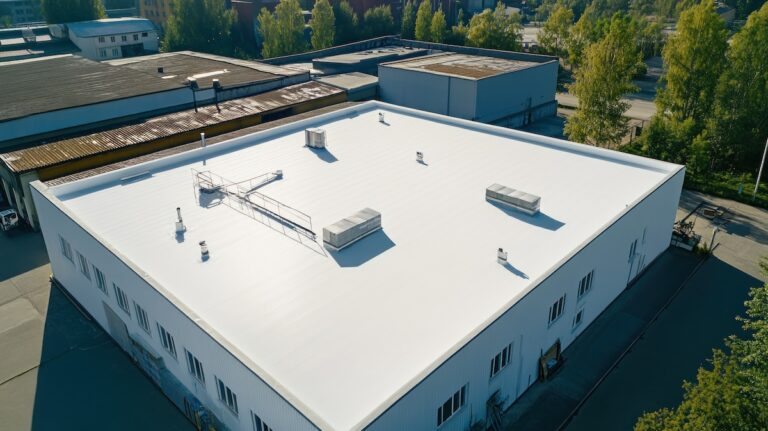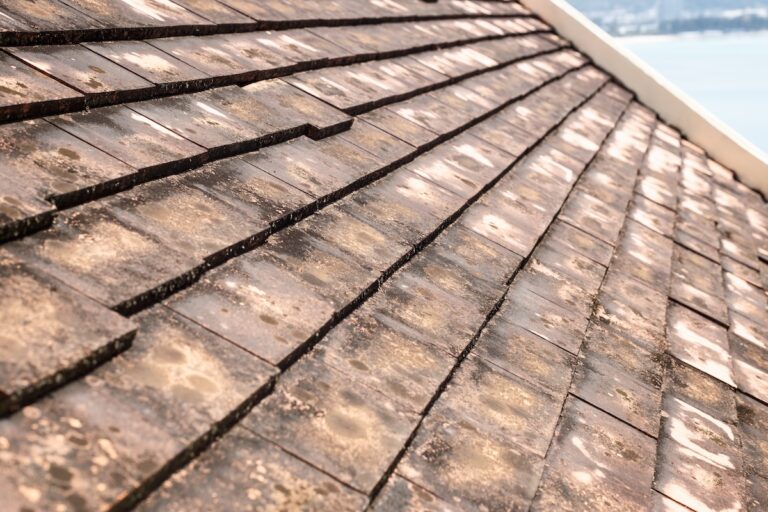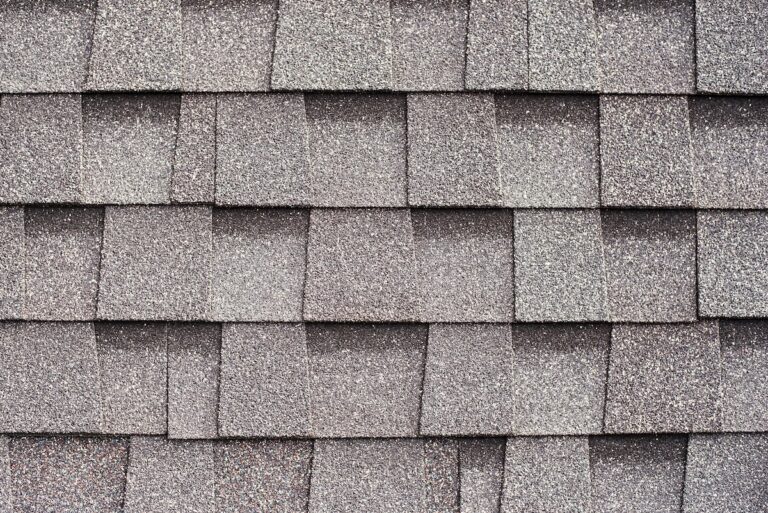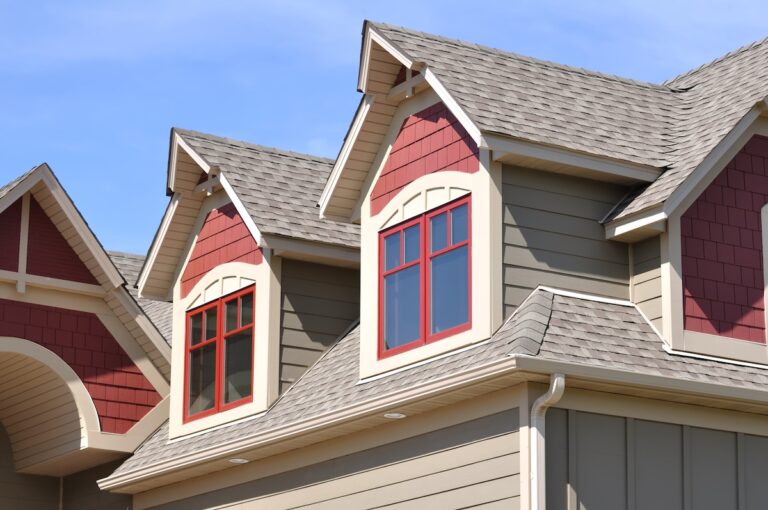When it comes to commercial roofing materials, PVC (Polyvinyl Chloride) has emerged as a popular choice for its durability, flexibility, and sustainability. Whether you’re a home or business owner considering a roof replacement or a contractor exploring new materials, PVC roofing offers a compelling option worth exploring.
This guide dives deep into:
- What PVC roofing is
- Its benefits and drawbacks
- Installation costs
- Maintenance requirements
- Lifespan
- Signs of damage
What is PVC Roofing?
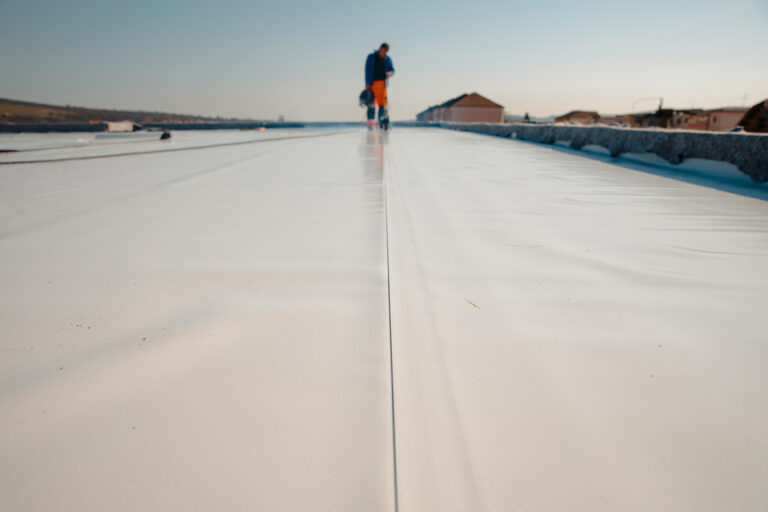
PVC roofing is a single-ply membrane composed of layers of PVC material reinforced with polyester. It’s commonly used on flat or low-sloped roofs in both residential and commercial buildings. The membrane is heat-welded at the seams to create a continuous, waterproof barrier over the roof structure.
✅ Pros of PVC Roofing
- Durability: PVC roofs are highly durable and can withstand various weather conditions, including extreme heat, wind, and moisture.
- Waterproof: The heat-welded seams provide excellent waterproofing, reducing the risk of leaks and water damage.
- Energy Efficient: PVC roofs are reflective, which helps to reduce cooling costs in warmer climates by reflecting sunlight away from the building.
- Low Maintenance: Once installed, PVC roofing requires minimal maintenance compared to other roofing materials.
- Chemical Resistance: PVC is resistant to chemicals, making it ideal for roofs where chemical exposure is a concern, such as industrial facilities.
- Long Lifespan: With proper installation and maintenance, PVC roofs can last upwards of 20-30 years or more.
- Recyclable: At the end of its life, PVC roofing materials are recyclable, contributing to sustainability efforts.
❌ Cons of PVC Roofing
- Cost: PVC roofing can be more expensive upfront compared to traditional asphalt shingles, although it offers long-term savings in maintenance and energy costs.
- Temperature Sensitivity: PVC can expand and contract with temperature fluctuations, which may require careful installation techniques in regions with extreme temperature variations.
- Installation Complexity: Proper installation of PVC roofing requires skilled professional roofers to ensure the seams are properly welded and the membrane is correctly installed.
- Environmental Concerns: Although PVC is recyclable, its production and some disposal methods can raise environmental concerns due to the use of chemicals in manufacturing.
Cost of Installing PVC Roofing
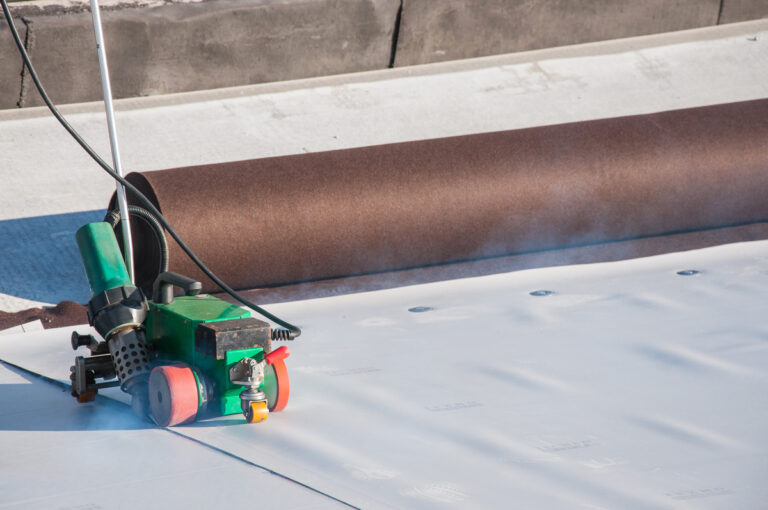
The cost of installing PVC roofing can vary depending on several factors:
- Size and Complexity of the Roof: Larger roofs or roofs with complex designs may cost more to install.
- Labor Costs: Installation by experienced professionals adds to the overall cost.
- Location: Prices can vary by region due to local labor rates and market conditions.
On average, expect to pay between $6 to $10 per square foot for PVC roofing installation. This cost includes materials, labor, and any necessary accessories.
Lifespan of PVC Roofing
When properly installed and maintained, PVC roofing can last 20 years or more. Factors such as climate, maintenance practices, and the quality of installation can affect its lifespan. Regular inspections and prompt repairs can extend the roof’s durability significantly.
How to Take Care of PVC Roofing
Maintaining PVC roofing is relatively straightforward:
Regular Inspections:
Inspect the roof annually for signs of damage, especially after severe weather events.
Clear Debris:
Remove leaves, branches, and other debris that can accumulate on the roof to prevent clogging of drains and potential damage.
Clean as Needed:
Clean the surface of the roof periodically using a mild detergent and water to remove dirt and debris.
Signs of Damage to Watch Out For
Recognizing signs of damage early can prevent costly repairs:
- Ponding Water: Standing water on the roof can indicate poor drainage or a problem with the membrane.
- Tears or Punctures: Damage to the membrane can compromise its waterproofing capabilities.
- Leaks Inside the Building: Water stains or moisture indoors can indicate a leak in the roof.
- Blisters or Bubbling: Raised areas on the roof membrane can indicate trapped moisture or improper installation.
- Cracking or Shrinking: Severe weather or age can cause the membrane to crack or shrink, leading to potential leaks.
5 Alternatives to PVC Roofing
While PVC roofing offers many benefits, several alternatives may suit different preferences or budgets:
1) TPO (Thermoplastic Polyolefin):
Similar to PVC but typically less expensive, TPO offers excellent durability and energy efficiency.
2) EPDM (Ethylene Propylene Diene Monomer):
A synthetic rubber roofing membrane that’s durable and cost-effective, often used in low-slope applications.
3) Metal Roofing:
Provides durability and energy efficiency, with options such as standing seam or corrugated metal roofs.
4) Asphalt Shingles:
A traditional roofing material known for its affordability and ease of installation, suitable for sloped roofs.
5) Green Roof Systems:
Eco-friendly options that include vegetation and soil layers, offering insulation and environmental benefits.
Learn More About PVC Roofing Systems
PVC roofing stands out as a reliable choice for flat or low-sloped roofs, offering durability, energy efficiency, and low maintenance requirements. While it may come with a higher upfront cost, its long lifespan and sustainability make it a cost-effective option in the long run. Whether you’re considering a new installation or a replacement, PVC membranes warrant serious consideration for its versatility and performance in diverse environmental conditions.
Install a PVC roofing system that will give you great results when you hire G. Cannon! Contact us today!


